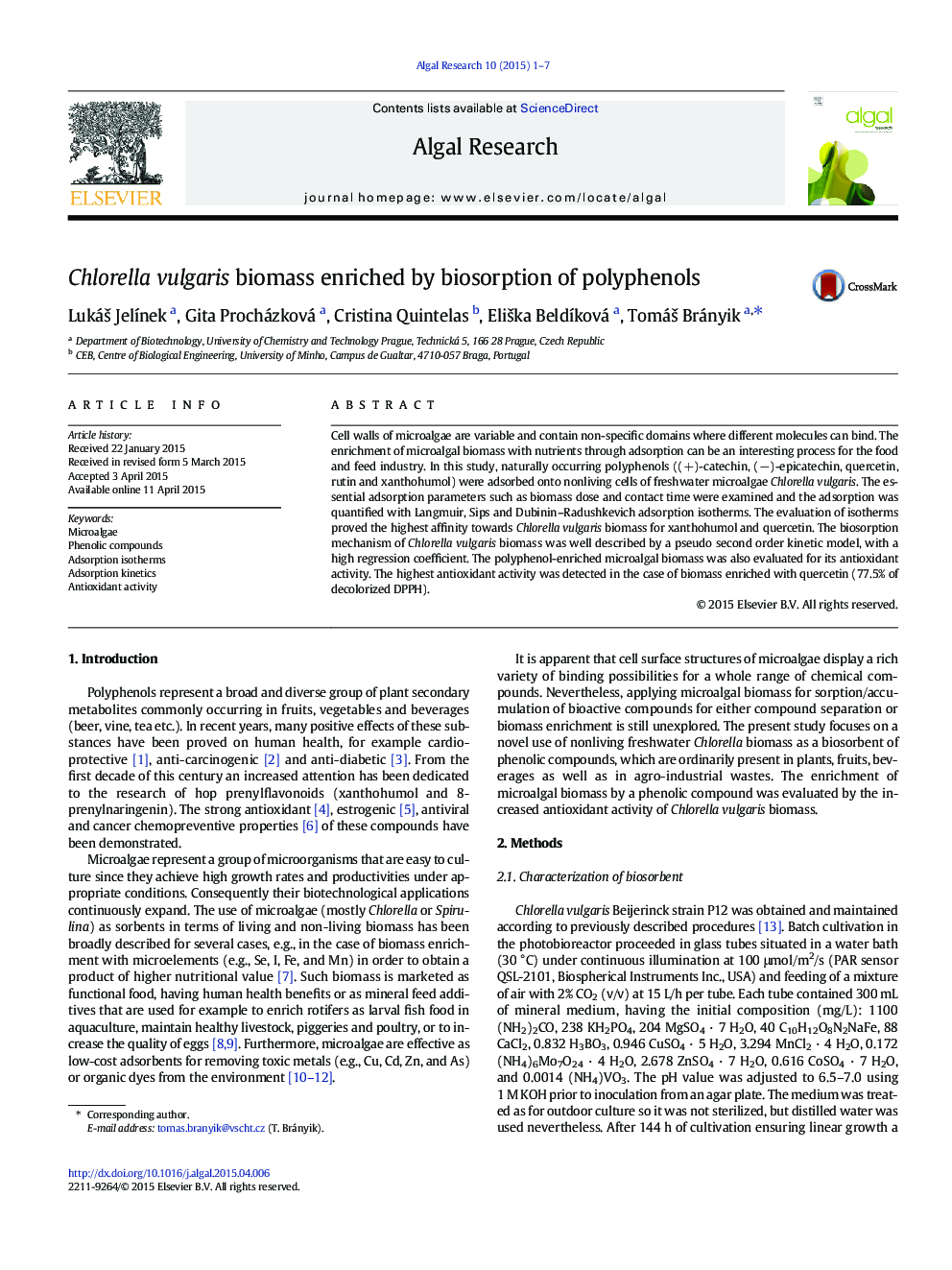| Article ID | Journal | Published Year | Pages | File Type |
|---|---|---|---|---|
| 1742037 | Algal Research | 2015 | 7 Pages |
•Green microalgae can adsorb polyphenols from low alcoholic water solutions.•Sips isotherm and pseudo-second order kinetic model described the adsorption well.•Polyphenol molecular structure plays a key role in the adsorption mechanism.•Adsorption intensity is higher for flavonoids than phenolic acids.•Polyphenol adsorption improved the antioxidant activity of enriched biomass.
Cell walls of microalgae are variable and contain non-specific domains where different molecules can bind. The enrichment of microalgal biomass with nutrients through adsorption can be an interesting process for the food and feed industry. In this study, naturally occurring polyphenols ((+)-catechin, (−)-epicatechin, quercetin, rutin and xanthohumol) were adsorbed onto nonliving cells of freshwater microalgae Chlorella vulgaris. The essential adsorption parameters such as biomass dose and contact time were examined and the adsorption was quantified with Langmuir, Sips and Dubinin–Radushkevich adsorption isotherms. The evaluation of isotherms proved the highest affinity towards Chlorella vulgaris biomass for xanthohumol and quercetin. The biosorption mechanism of Chlorella vulgaris biomass was well described by a pseudo second order kinetic model, with a high regression coefficient. The polyphenol-enriched microalgal biomass was also evaluated for its antioxidant activity. The highest antioxidant activity was detected in the case of biomass enriched with quercetin (77.5% of decolorized DPPH).
